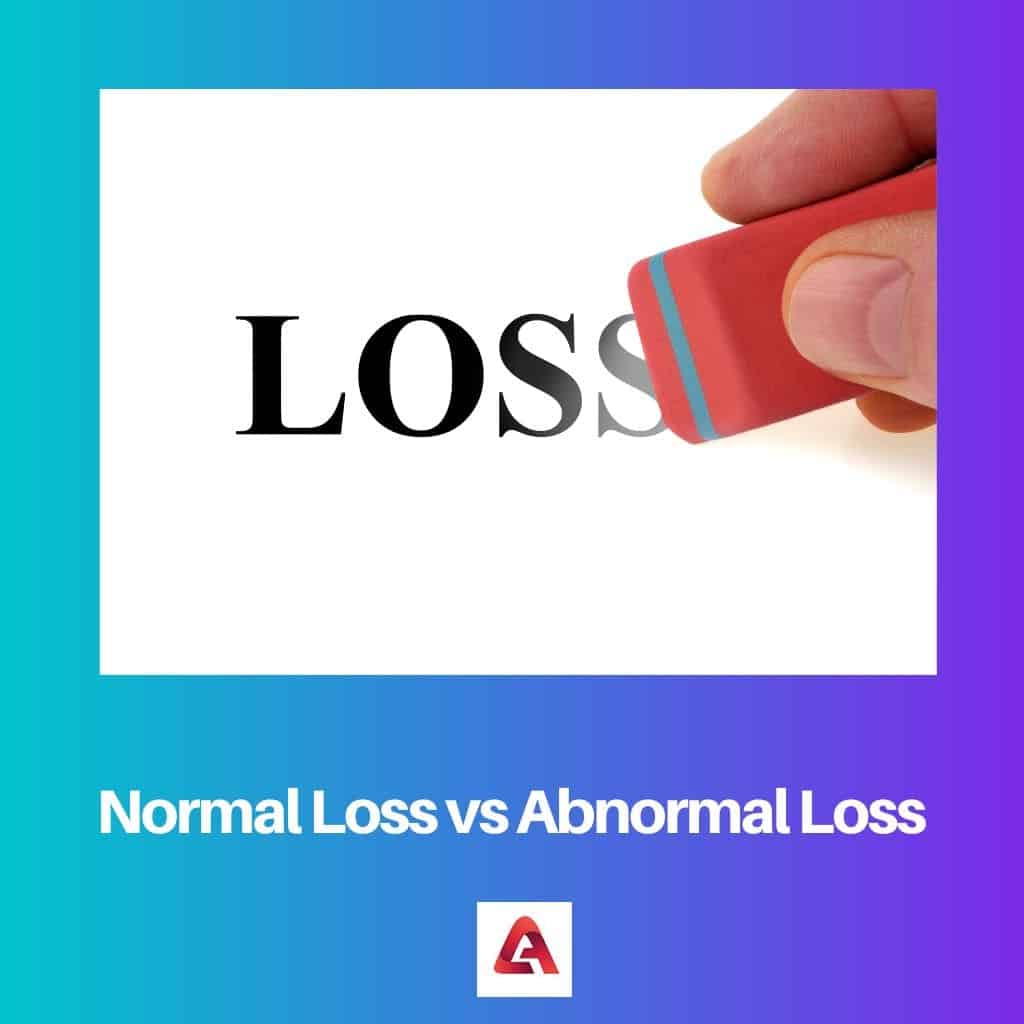Normal loss, which happens during the production process, is an inalienable loss. These losses are allocated among the remaining product units and reported right away in the books of accounts. On the other hand, an abnormal loss is any loss that occurs unintentionally as a result of unforeseen circumstances. The price is not included in the cost of manufacturing since the corporation views these as an expense.
What are the differences between normal and abnormal loss? Let’s find out the main differences between these two.
Key Takeaways
- Normal loss occurs due to expected, unavoidable factors during production, whereas abnormal loss results from unexpected events or inefficiencies.
- Normal loss is considered a part of the production cost, while abnormal loss requires investigation and corrective action to minimize future occurrences.
- Normal loss does not impact the profit margin, but the abnormal loss can negatively affect profitability.

Normal Loss vs Abnormal Loss
A normal loss can occur during a manufacturing process. This loss cannot be avoided. This type of loss occurs because of the movement of objects from one place to the other. This loss can be estimated in advance. Abnormal loss mostly occurs due to negligence. It cannot be estimated in advance. Losses that occur due to floods or earthquakes are abnormal losses.
Comparison Table
| Parameters of Comparison | Normal Loss | Abnormal Loss |
|---|---|---|
| Meaning | Normal Loss is a loss that happens frequently because of the inherent properties of the raw materials and the production process. | An abnormal loss is one that results from unanticipated circumstances like faulty products, negligence, equipment failure, etc. |
| Estimation | On the basis of prior experience, one can estimate it in advance. | It cannot be predicted in advance. |
| Nature of Loss | Expected. | Not expected. |
| Treatment of cost of loss | Treated as a component of the production cost. | It is not regarded as a component of the production cost. |
| Realizable Value | Credited to Process Account. | Credited to Abnormal Loss Account. |
What is Normal Loss?
In transit or at the godown of the consignee, some of the consignment-shipped goods may be lost or otherwise damaged. Since the ownership of the products remains with the consignor and does not transfer to the consignee under the consignment model of business, the consignor bears the loss. For the consignor’s accounts to receive the proper accounting treatment, the loss on consignment must be classified as normal or abnormal.
Natural processes like drying, evaporation, leaking, shrinkage or the perishing of a few items as a result of handling things in large quantities account for the majority of normal loss. It is a loss that cannot be prevented by any means and is inevitable or unavoidable.
The nature or type of objects being handled or moved from one place to another is the main reason for normal losses. In many businesses, these losses are anticipated and frequently tolerated to a larger extent than exceptional losses.
Forms of Normal Loss are as follows:
- Normal Waste
- Normal Scrap
- Normal Spoilage
- Normal Defectives
As they are considered to be a part of the production cost, normal losses are not charged to ending work in progress. Normal losses are not taken into account while calculating comparable units, and as a result, when they are deducted from the cost of raw materials, the cost of normal loss is automatically allocated to the total number of units produced.
What is Abnormal Loss?
While some losses are the result of negligence, others are unintended. As an example, consider theft or loss brought on by a fire, flood, earthquake, war, transportation disaster, etc. Such losses are rare, to varying degrees. Assume that some of the things are stolen, this lowers the stock’s worth and, consequently, the consignment business’s profit.
An abnormal loss indicates that there are serious production-related problems that need to be found and resolved as soon as possible. There are many things that can cause a business to lose money abnormally.
The greatest action to do right now is to calculate the cost of the lost items. The consignment account is credited after the value has been determined, and the abnormal account is debited and transferred to the profit and loss account, resulting in the correct profit or loss for the consignment.
Some business owners might invest in insurance for goods that are delivered or received. This type of coverage is only available when exceptional loss of goods occurs.
Main Differences Between Normal Loss and Abnormal Loss
Normal Loss
- It is simple to predict in advance utilizing historical data and empirical calculations.
- It is stated as a percentage of the input to each process.
- It could happen at the start of a procedure or in the middle of one.
- It is anticipated to happen under typical process circumstances.
- It is only taken into consideration when unsold stock is to be valued.
Abnormal loss
- It is an unforeseen loss.
- One-time, unique circumstances bring on losses.
- These are not innate to the manufacturing or production process.
- Calculating the cost of lost goods is the first step.
- If the proper precautions are taken, it can be controlled.
